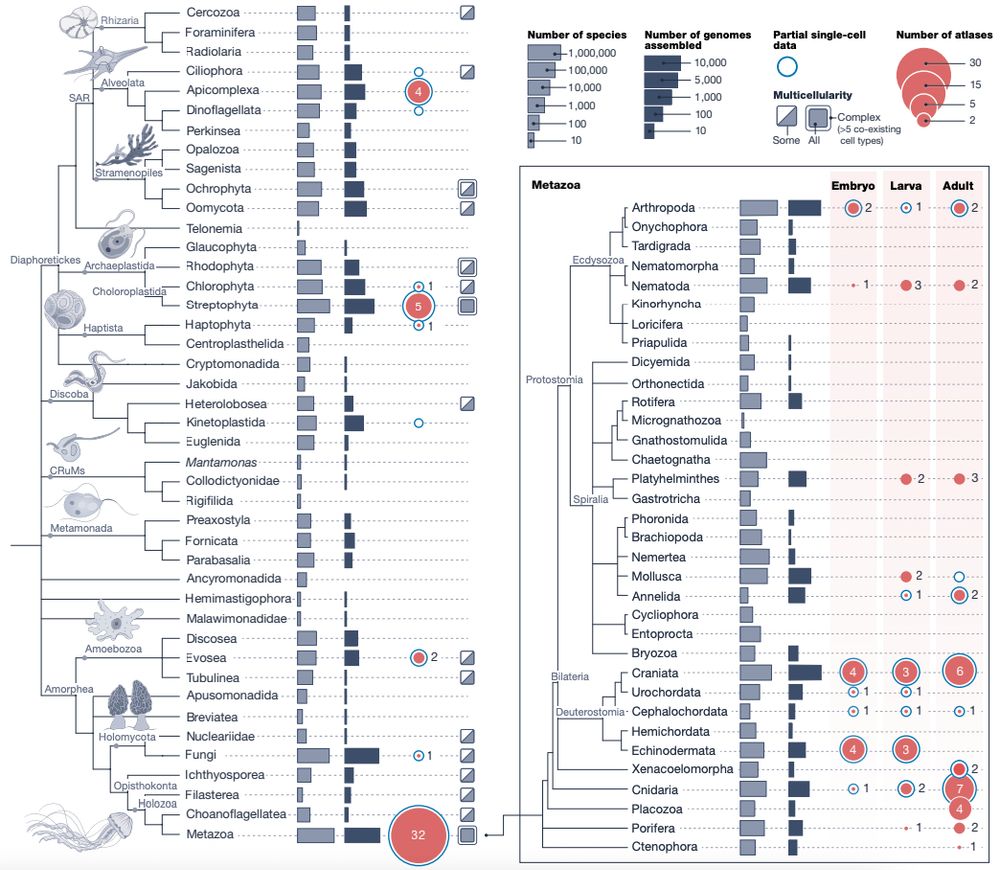We combine evolutionary genetics and cell biology to study how DNA repeat evolution perturbs and preserves genome integrity.
obituaries.seattletimes.com/obituary/men...

obituaries.seattletimes.com/obituary/men...


@simonsfoundation.org. Details to follow. Please RT.


(Please repost to reach a broad audience.)
(Please repost to reach a broad audience.)
Morning walk through the woods, exciting panel discussion, flash talks, lab community, drosophila friends, …
@events.embl.org
The transposon community is going very strong. see you all again in 2027!!




Morning walk through the woods, exciting panel discussion, flash talks, lab community, drosophila friends, …
@events.embl.org
The transposon community is going very strong. see you all again in 2027!!
Organized with Tanja Schwander, Laura Ross (@laurarossevo.bsky.social) and Axel Imhof.
meetings.embo.org/event/26-sel...
#EMBOselfishElements #EMBOevents

Organized with Tanja Schwander, Laura Ross (@laurarossevo.bsky.social) and Axel Imhof.
meetings.embo.org/event/26-sel...
#EMBOselfishElements #EMBOevents
Out now in Science, my PhD work with @lindymcbr.bsky.social uncovers the ancient origin of the “London Underground mosquito” – one of the most iconic examples of urban adaptation.
🧵(1/n)
@science.org
www.science.org/doi/10.1126/science.ady4515

Out now in Science, my PhD work with @lindymcbr.bsky.social uncovers the ancient origin of the “London Underground mosquito” – one of the most iconic examples of urban adaptation.
🧵(1/n)
@science.org
www.science.org/doi/10.1126/science.ady4515
Today, we report the discovery of telomerase homologs in a family of antiviral RTs, revealing an unexpected evolutionary origin in bacteria.
www.biorxiv.org/content/10.1...

Today, we report the discovery of telomerase homologs in a family of antiviral RTs, revealing an unexpected evolutionary origin in bacteria.
www.biorxiv.org/content/10.1...
#RNAbiology #TEsky #smallRNAs #PRC2 #DNAelimination
1/5
academic.oup.com/nar/article-...

#RNAbiology #TEsky #smallRNAs #PRC2 #DNAelimination
1/5
academic.oup.com/nar/article-...
Something different from the group! Thanks to Yuxin, a talented student in the lab, we used long-reads in 75 human trios to study telomeres and their inheritance.

Something different from the group! Thanks to Yuxin, a talented student in the lab, we used long-reads in 75 human trios to study telomeres and their inheritance.
We explored the consequences of inheriting long telomeres from dad and short telomeres from mom. Or the reciprocal. Turns out, parent-of-origin matters (in mice, at least).
authors.elsevier.com/c/1loW-3QW8S...
We explored the consequences of inheriting long telomeres from dad and short telomeres from mom. Or the reciprocal. Turns out, parent-of-origin matters (in mice, at least).
authors.elsevier.com/c/1loW-3QW8S...
meetings.embo.org/event/24-evo...
meetings.embo.org/event/24-evo...
www.nature.com/articles/s41...

www.nature.com/articles/s41...

doi.org/10.1186/s130...

doi.org/10.1186/s130...
Join us to explore the piRNA pathway with structural and genetic approaches (see 👇👇).
PhD student/postdoc position co-supervised by Clemens Plaschka & myself.
DM or email us if you’d like to know more!
@vbcscitraining.bsky.social @imbavienna.bsky.social @impvienna.bsky.social
But how does piRNA-guided target interaction translate into silencing?
PhD student Júlia Portell Montserrat has an intriguing answer
www.cell.com/molecular-ce...

Join us to explore the piRNA pathway with structural and genetic approaches (see 👇👇).
PhD student/postdoc position co-supervised by Clemens Plaschka & myself.
DM or email us if you’d like to know more!
@vbcscitraining.bsky.social @imbavienna.bsky.social @impvienna.bsky.social
doi.org/10.1101/2025...
A thread 👇

doi.org/10.1101/2025...
A thread 👇
www.biorxiv.org/content/10.1...

www.biorxiv.org/content/10.1...
Interested in chromatin and its evolution? Good news! There's still time to join us in beautiful Catalonia (9-12 Dec) to discuss eukaryotic, bacterial, archaeal, and viral chromatin and how it all hangs together meetings.embo.org/event/24-evo...
Abstract deadline: 30 September

Interested in chromatin and its evolution? Good news! There's still time to join us in beautiful Catalonia (9-12 Dec) to discuss eukaryotic, bacterial, archaeal, and viral chromatin and how it all hangs together meetings.embo.org/event/24-evo...
Abstract deadline: 30 September


